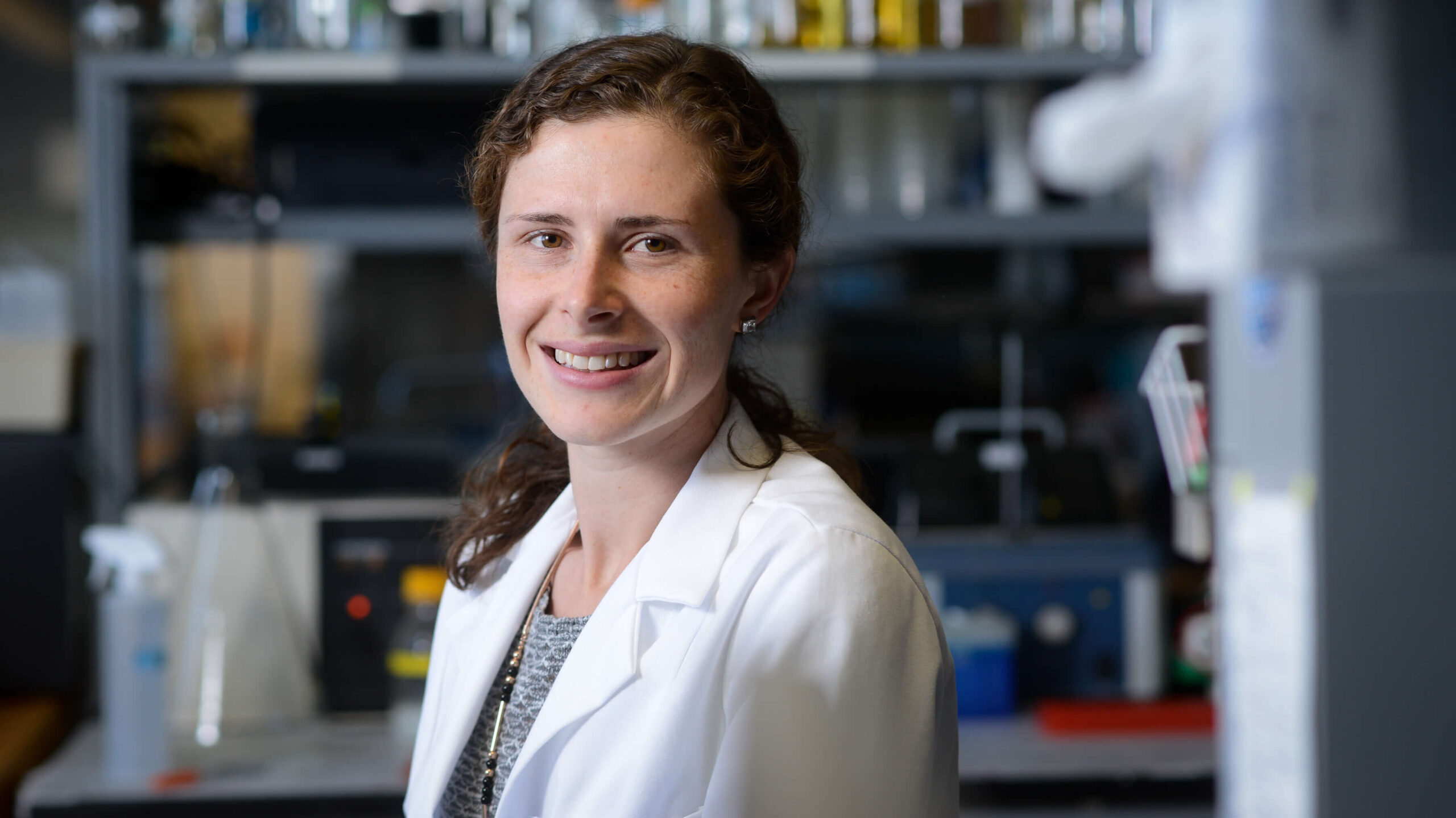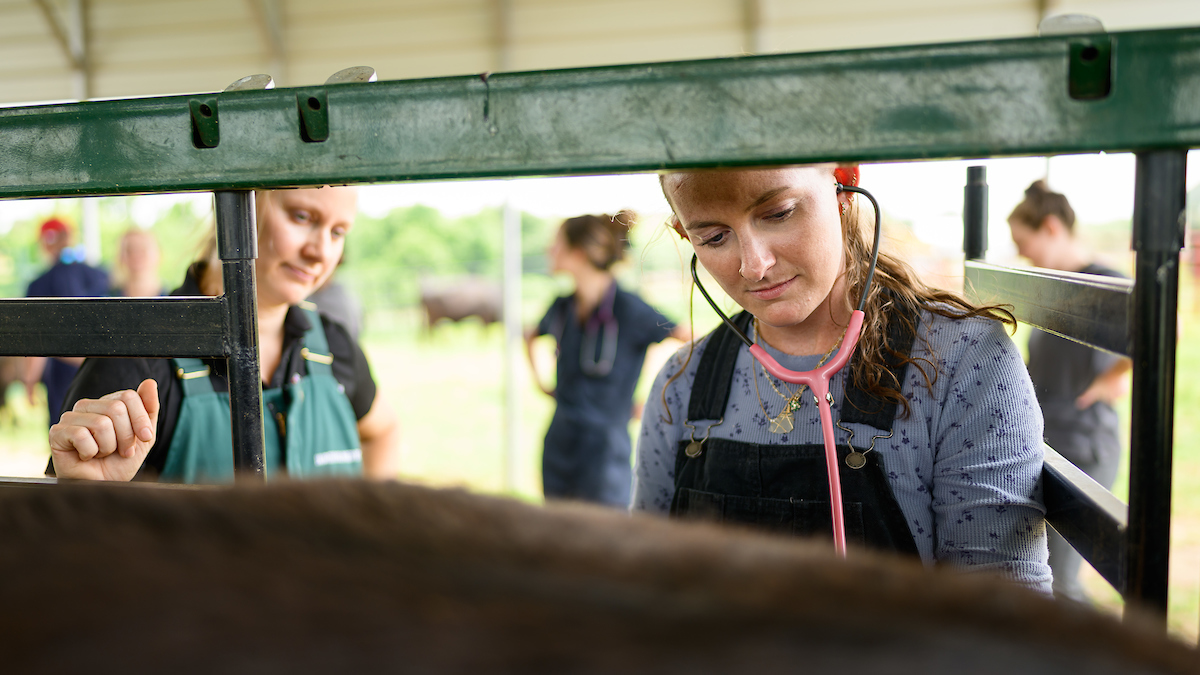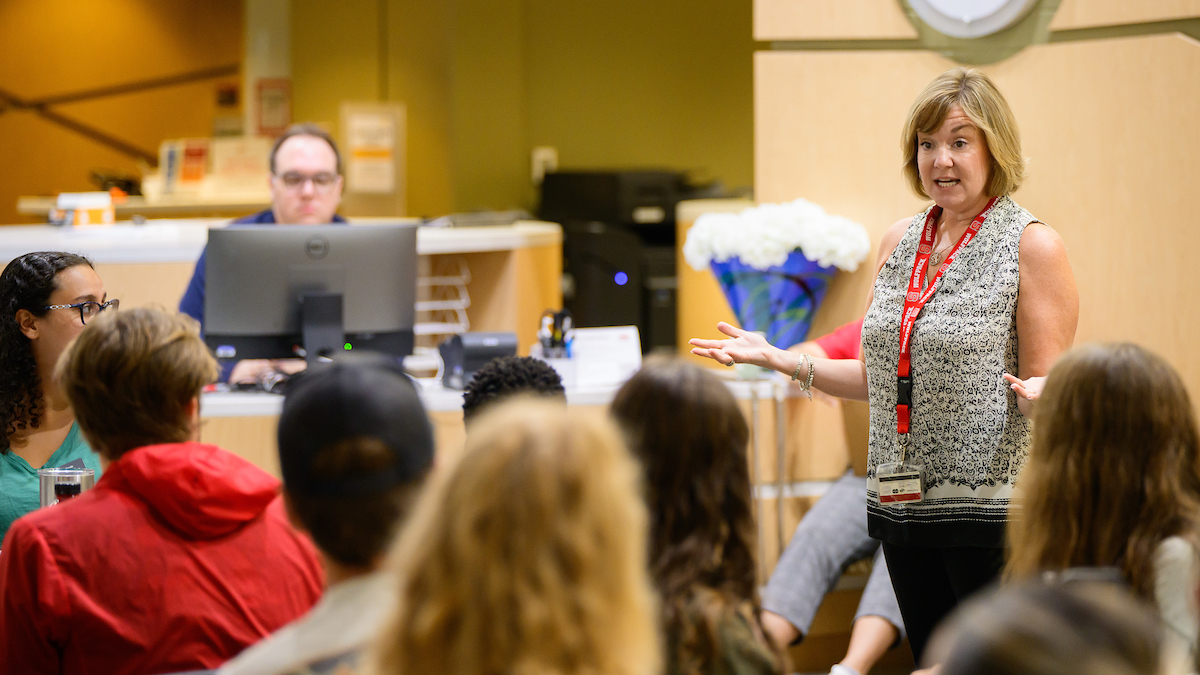Justice Agency Grants Keep Crime-Fighting Forensic Science Advancing at NC State
Dr. Kelly Meiklejohn will launch two more studies on improving DNA extraction methods: one tied to illegal leather-making and the other to ensure that more crime-scene samples are authorized for further testing.
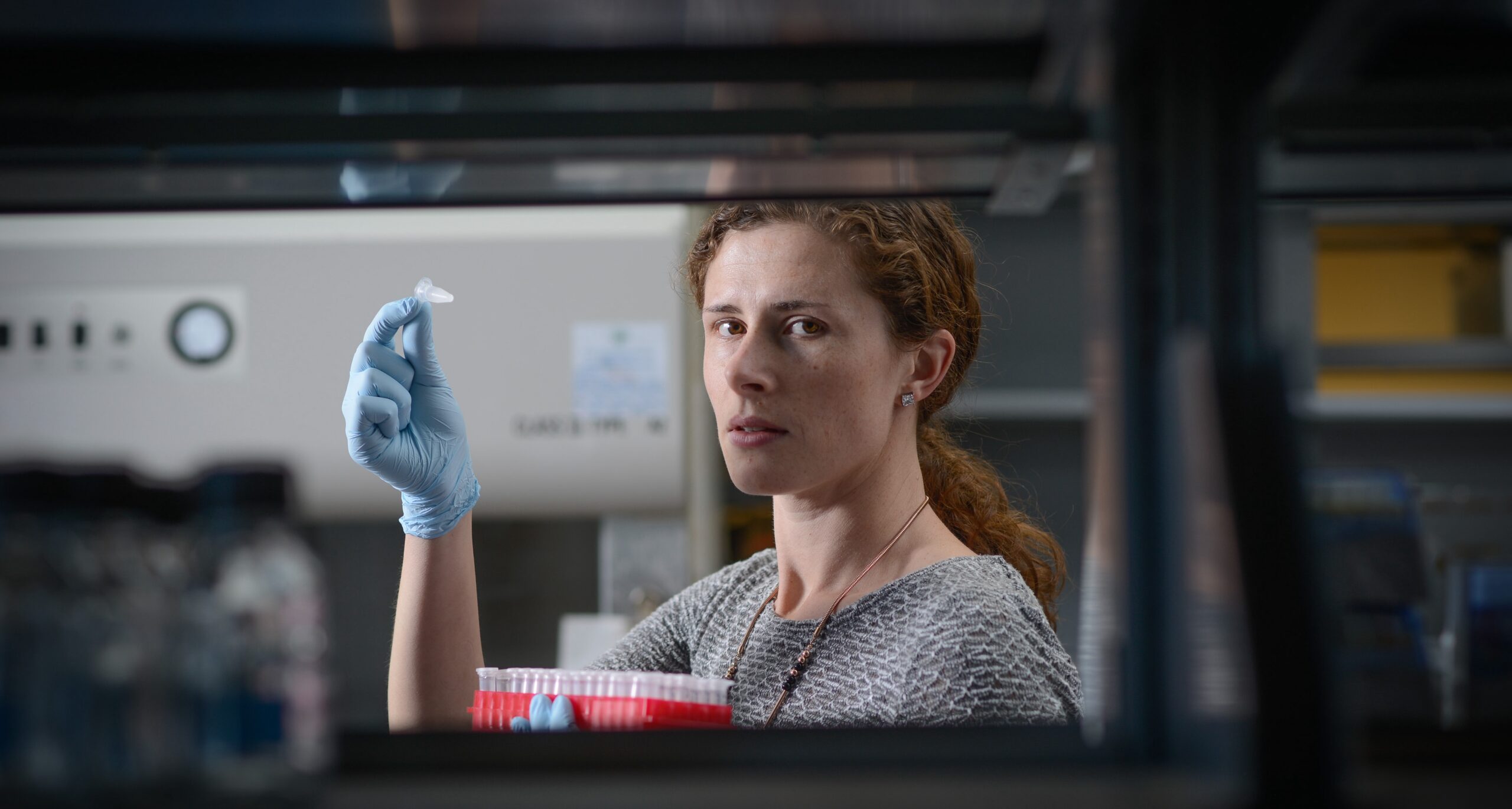
The National Institute of Justice has awarded Dr. Kelly Meiklejohn of the NC State College of Veterinary Medicine two grants totaling more than $600,000 to support her innovative and crime-fighting work in forensic biology.
In collaboration with the U.S. Fish and Wildlife Service, Meiklejohn will use one grant to apply a new DNA method to determine whether leather items such as belts, shoes and purses have been made illegally with the skin of endangered animals. The second study involves investigating whether a highly sensitive method for quantifying DNA — used routinely for cancer diagnostics in dogs by Dr. Matthew Breen, professor of genomics at the NC State College of Veterinary Medicine — can identify additional evidence samples suitable for DNA processing.
“In forensic science, there is a substantial investment of time and money needed to get a new method approved for use in casework — we’re talking months and thousands of dollars,” says Meiklejohn, an associate professor of forensic biology in the Department of Population Health and Pathobiology. “Many laboratories do not have the resources to complete the testing and evaluation needed to assess new methods — that’s where academic research laboratories can assist.”
Meiklejohn frequently looks to other scientific disciplines to see what new technologies or approaches they are using and how they could be helpful for forensic science.
“I was familiar with droplet digital PCR that the Breen Lab uses for detecting rare DNA sequence mutations in cancer, and I thought maybe it could be useful for forensic purposes as well, given DNA amounts are often very limiting,” she says.
These awards follow Meiklejohn’s conclusion of another study, also funded by the National Institute of Justice, that focused on assessing whether characterizing nonhuman DNA from plants, fungi, arthropods and bacteria in soil samples can help pinpoint where the evidence came from. In 2023, she led a related study that showed that forensically relevant information can be retrieved from human DNA found in household dust.
The ideas for the studies supported by the National Institute of Justice — the research, development and evaluation agency of the U.S. Department of Justice — were the result of Meiklejohn’s continuous drive to solve problems.
Over the past six years, she has participated on the wildlife forensics subcommittee of the Organization of Scientific Area Committees for Forensic Science, a group that brings together practitioners to develop standards for the forensic community and to identify research needs. Comparing the abilities of her lab against existing gaps led her to apply for the grant.
“This area is somewhat overlooked within forensic science just because it’s not human crimes, it’s crimes against wildlife,” says Meiklejohn, a native of Australia who has been at NC State since 2018. “Wildlife forensic practitioners often don’t have the resources or time to develop or test new methods.”
The leather-making process, which involves tanning and acids, can make it difficult to get definitive results from traditional DNA tests conducted on suspect items. Meiklejohn’s study will use newer and more sensitive DNA sequencing methods — called massively parallel sequencing or next-generation sequencing — to sequence even smaller quantities of DNA that still can provide critical data, she says.
Wider implications
“Determining the species used to make the leather item is crucial to deciding whether a violation of domestic or international species protection laws has taken place,” says Meiklejohn, noting that traditional DNA methods allow species identification in only 30% of cases. “Our lab is trying to develop new genetic approaches to glean more DNA sequences from leather items. State, federal and global wildlife forensic laboratories could really benefit from a new method to be able to analyze leather or hide items.”
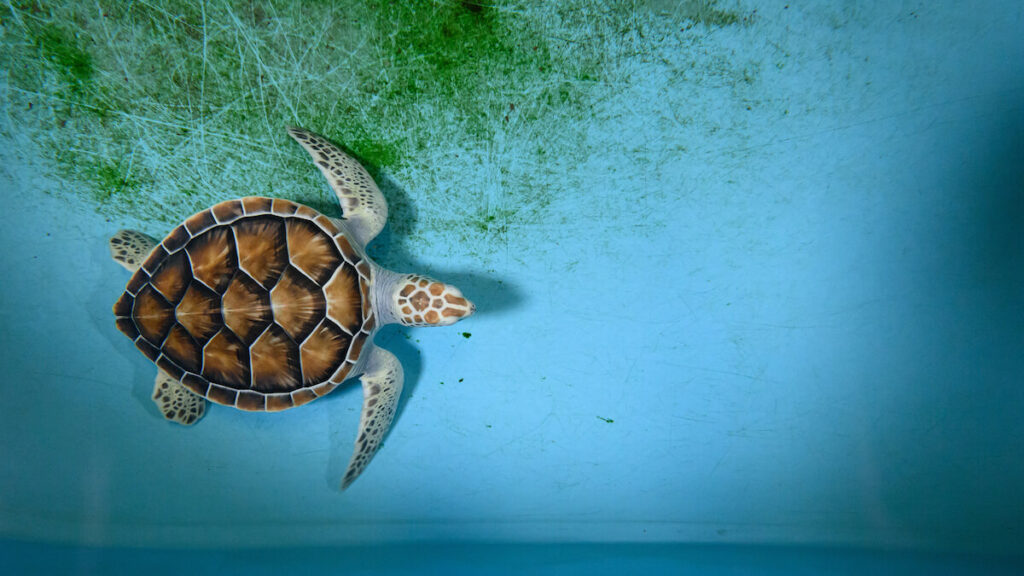
Sea turtles are the most common species encountered in the illegal leather trade, and some species can be found in North Carolina: loggerhead, green sea, hawksbill, Kemp’s Ridley and leatherback.
Meiklejohn says cracking down on the illegal leather trade could have much wider implications. Interpol has reported that wildlife crime has become one of the world’s largest criminal activities because of its reliance on armed violence and corruption. The illegal animal trade also is intertwined with financial crimes, ranging from money laundering to the financing of other forms of transnational organized crime.
With the second grant, Meiklejohn hopes to decrease the number of forensic samples that are deemed unsuitable for DNA profiling because they lack sufficient DNA for testing. FBI guidelines require that each sample be audited for DNA quantities before further testing, and sometimes outside factors such as hair dye can inhibit the audit’s findings.
“Commercially available DNA profiling kits can tolerate some level of inhibitors so processing a sample containing inhibitors can still yield a positive result,” says Meiklejohn, who spent three post-doc years working in the FBI lab in Quantico, Virginia. “The new, finer-tuned DNA quantification approaches that the Breen lab uses for cancer detection are more tolerant to inhibitors and can provide a better assessment of the amount of DNA in a sample.”
Meiklejohn will compare results from traditional DNA-detection procedures currently used in forensic casework to those produced from droplet digital PCR, or ddPCR, to test the latter’s efficacy at identifying additional samples that have enough DNA to proceed with profiling. Her lab will compare DNA found in a variety of mediums likely to be encountered in casework, including hair, bodily fluids and mixed samples.
The traditional qPCR (quantitative polymerase chain reaction) test — the same approach commonly used for lab-based COVID testing — produces one data point. The ddPCR approach takes that one data point and splits it into 20,000 reactions that will be less affected by the inhibitors, Meiklejohn says.
Both NIJ studies will run concurrently in Meiklejohn’s lab and are expected to conclude in 2026.
For the soil study that ended in December, Meiklejohn was investigating whether DNA-based analysis could help forensic geologists compare soil samples with similar underlying soil characteristics. The FBI doesn’t currently analyze DNA from plants, bacteria, arthropods and fungi to compare soils, she says.
Meiklejohn’s team selected 30 locations across the North Carolina mountains, the Piedmont and the Coastal Plain and collected soil samples nearly 1,000 feet apart at each location. Each sample was processed using current forensic methods and with new methods, including instrumental colorimetry, mineral microscopy and DNA analysis. The end goal is to determine which new methods would be most effective at confirming whether two soil samples are derived from the same source.
“The information gleaned from these analyses could allow the forensic scientist to conclude that there is or is not a possibility that the questioned soil originated from the same source as the known,” Meiklejohn says. “For instance, does the soil on a suspect’s shoe match the soil where a body was buried?”
The results of the soil study will be presented at the American Academy of Forensic Sciences Meeting in Baltimore, Maryland, in February.
